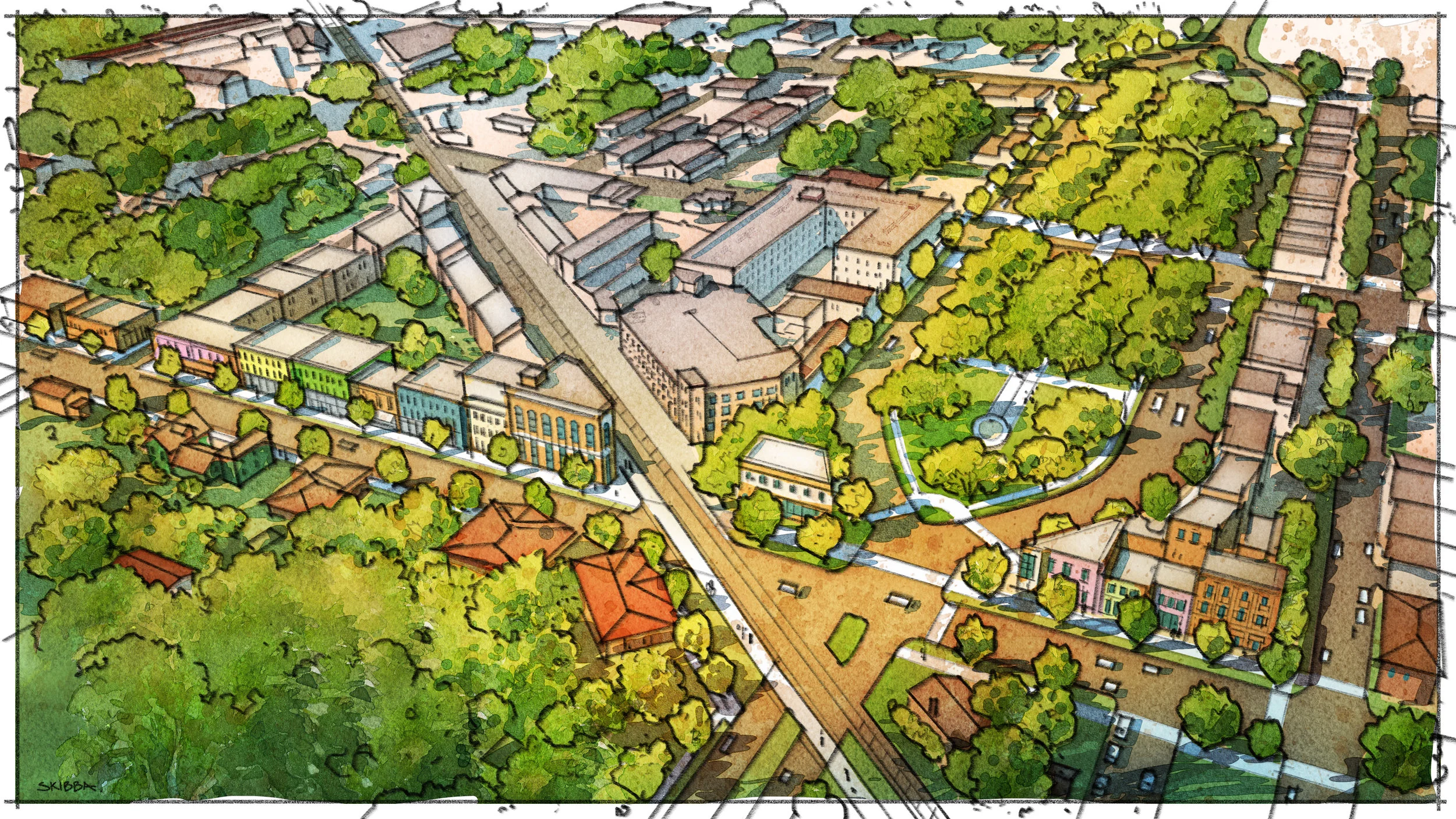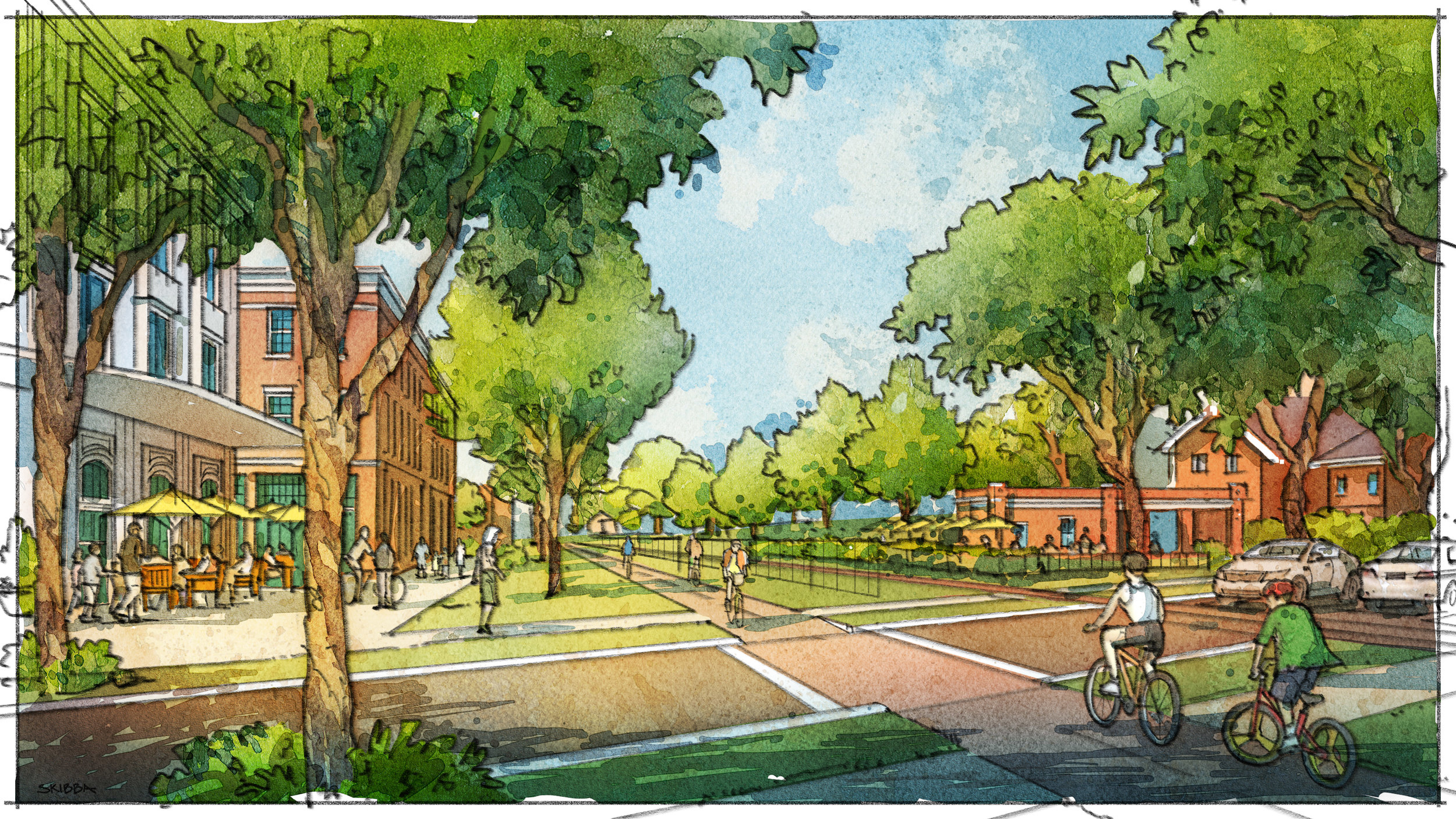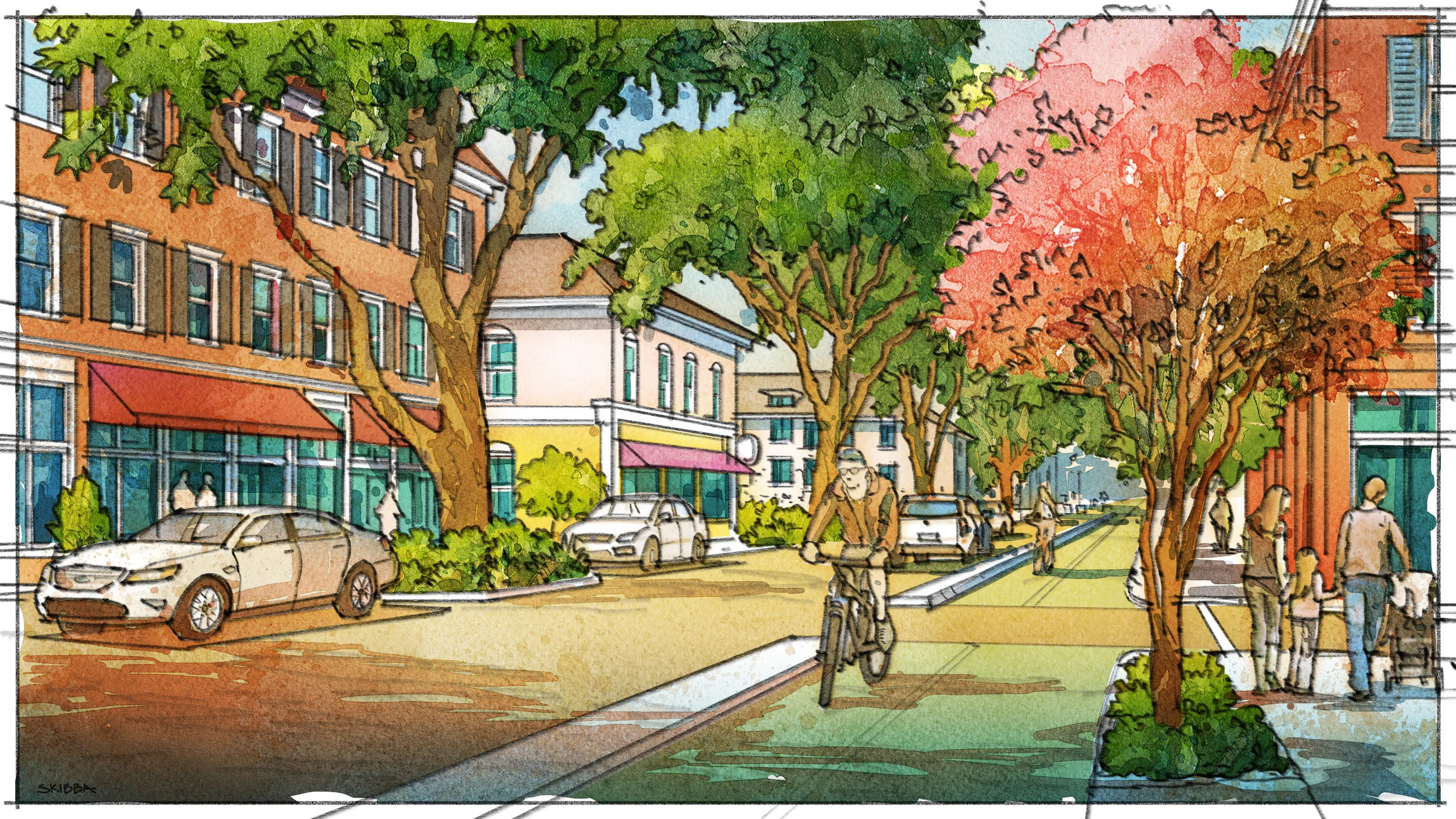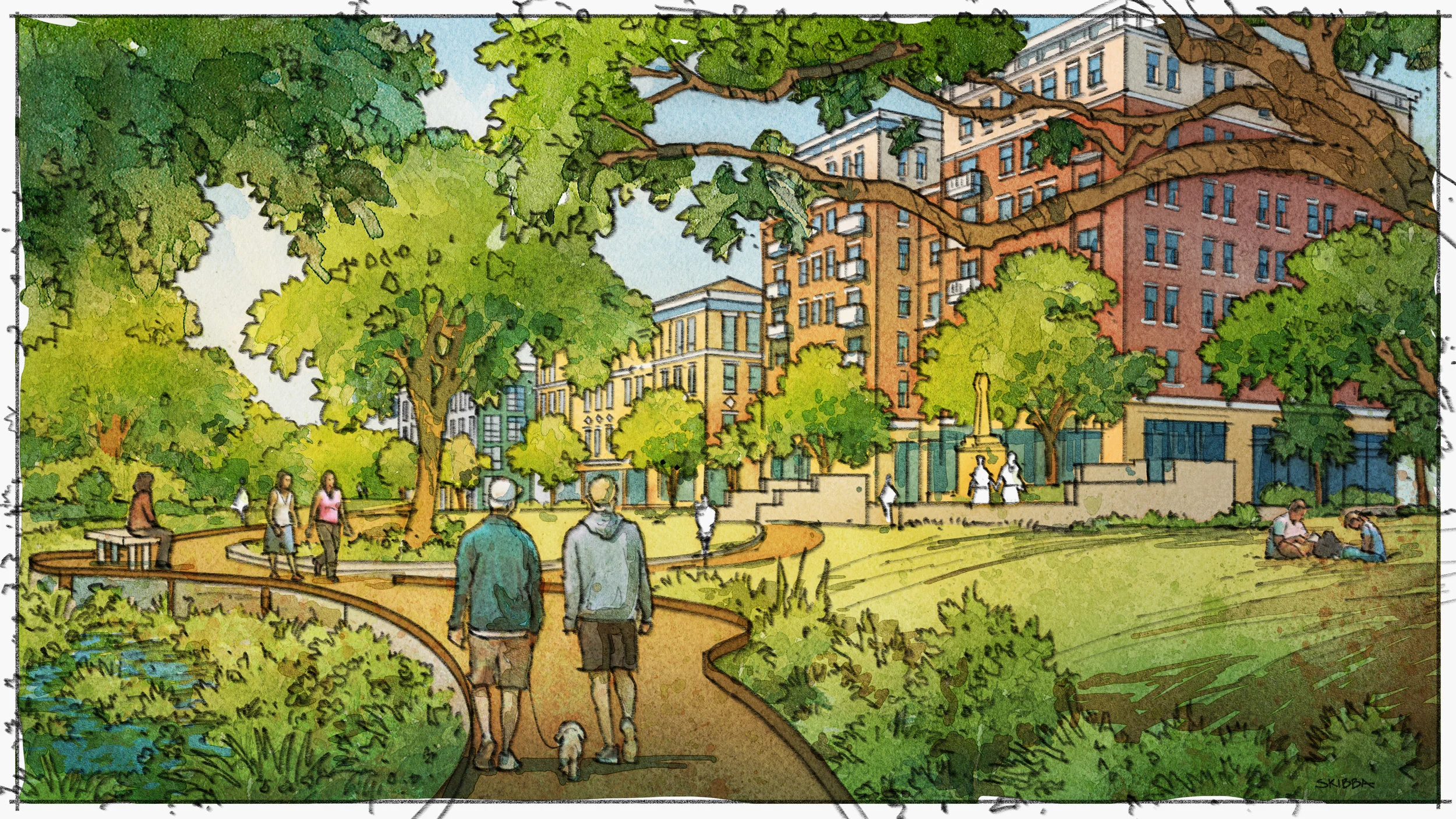Regarding CNU 26 and New Urbanism
I’ve been meaning to write a summary of my thoughts of the annual gathering of the Congress for the New Urbanism. This is something I’ve done in various forms since I began blogging, over a decade ago. Of course, this year it’s even more meaningful to me, as I was Co-Chair of the Local Host Committee along with Eric Brown for this year’s CNU 26 in Savannah.
For some inspiration, watch this presentation by Jan Gehl, one of the most important thinkers and practitioners of our time
Truthfully, I’ve had a hard time putting pen to paper (or keys to screen). This year was especially exhausting, inspiring and fulfilling. It’s left me a little worn down. And, after coming to Congresses for 20 years, I don’t want to be broken record anymore for those that read this blog. If you read this site, you probably have an idea of my passion for New Urbanism and my feelings about CNU (both good and bad).
That said, it is a bit of a mental cleansing to write out your thoughts and to share them broadly. So here’s some thoughts for those that are new to New Urbanism and to those of us that are long-timers.
I was drawn initially to CNU, and have remained with CNU, because it contains principles AND action. In my own professional opinion, CNU has been the home of the innovators and the do-ers. It’s people working in the trenches and solving problems, but with a set of principles. There are designers, but it’s not solely about design. There are developers, but it’s not a developer group. There are academics, but it’s not a group of academics.
It’s also a group that welcomes and enjoys controversy and disagreement. For example, there was a plenary session this year that a number of us honestly hated. But some others loved it - arguments were had in the bars later. Harsh words were spoken. But we still left as friends and colleagues. That's how CNU rolls. We argue relentlessly, test ideas and refine them or discard them. We push each other to test ideas in the real world, not just leave them to theory. I’ve often wished more of American society could be like CNU – live by principles, be willing to be criticized and to criticize, and be able to socialize together afterwards.
As any movement succeeds, it also becomes mainstream. Much of CNU’s work fits that bill. Groups that originally were hostile to new urbanist ideas now speak the same language. Whether it’s ULI, APA, AIA, National League of Cities, Smart Growth America and many more - they’ve all been deeply influenced by CNU.
But times and issues also change. I was excited to be on a panel discussing generational differences in the practice of New Urbanism because we are certainly in the midst of a major shift in issues and techniques. Some long-time members see this, but many do not.
Digressing for a minute on the subject of generational change, I had to reflect back to an experience earlier this year. I had an invitation and the opportunity to travel to Seaside, FL and attend the annual Seaside Prize ceremony. Seaside was the first complete New Urbanist community, begun 30 years ago. While it’s had more than its share of attention and press, it is still worth visiting and studying. Whatever you might think of Seaside, and its sisters Rosemary Beach and Alys Beach, these communities have proven something important. They have proven that Americans are still capable of building beautiful, complete, timeless communities AND that doing so is a profitable venture - not simply philanthropic.
In retrospect, just this alone was an incredible accomplishment. It’s so easy today to pick apart projects from 30 years ago, when most everyone now has forgotten just how hard it was to do anything well in that era. We’ve forgotten just how dominant the suburban mindset was, how abysmal all forms of architecture were, and how much determination it took to produce newly-built beautiful, walkable communities. Today, walking the public spaces of Rosemary Beach or the streets of Seaside, you are easily consumed by how sublime and beautiful they are. You hardly notice that you are walking alongside a highway, or that the beachfront isn’t blocked off with mindless towers. Children roam around freely without worry of being run over in the streets. Adults socialize in cafes and walk or ride a bike home. It all seems very natural, like it’s been there for many generations. But it hasn't been, and all of it took very hard work by many people over a long period of time. What will be the New Urbanism's similar big accomplishment of the next generation?
In 2018 we have new struggles. The task before us is to address them directly, and figure out a meaningful path forward for the next 25 years. Some issues are still with us from 30 years ago – in most cities we still struggle to level the playing field to “legalize" new urbanist development. We still struggle with entrenched transportation oligarchies that are well-funded and resistant to change. We still argue incessantly about parking.
But we also find ourselves in the midst of a renaissance of walkable cities and towns, and a return-to-the-city movement. And, the signs are evident in virtually every city of size anywhere in the country. The big issues of today and tomorrow are primarily about affordability/accommodating the demand for urbanism, fiscal solvency, and equity. We also have the opportunity to explore techniques and practices that we couldn’t have dreamed of 30 years ago, such as car-free or shared streets, European-level bicycle infrastructure, vastly new approaches to retailing and dramatic parking reform. We are starting to embrace and consider critical new approaches such as Lean Urbanism, successional urbanism, and a complete transformation of public transportation. All of these are good changes – encouraging changes – but changes that require new approaches nonetheless. I plan to write more about this in the coming months, as these are all critical if CNU is to remain a leader in the 21st century. The affordability issue in particular is one that could take all the air out of the room for cities, and CNU needs to be actively partnering with YIMBY groups to lead this discussion. Without each other, we will struggle to find any long-term success.
Maybe CNU and New Urbanism isn’t for you - that’s fine. I don’t expect everyone to be as interested in all of this as I am. Far from it. But if you care at all about cities, making better places, planning for the future - I don’t know why you wouldn’t.
As a reform movement, New Urbanism has always taken shots from those that benefit from the status quo (who that is may surprise people). That is to be expected. Don’t enter the ring if you don’t expect to take hits. Don’t critique the dominant paradigm and expect it not to push back. Often, it will push back hard with vitriol and personal attacks. That’s just part of what you have to accept if you want to change anything. It is draining, yes. Engaging the peanut gallery can sap all of the life out of you, yes. But we all have to continue to find our energy, and for me the Congress has been an annual opportunity to get re-energized.
What life has taught me is that many people prefer to sit on the sidelines and throw stones, rather than actually engage. It’s far easier. If you try to solve problems, you are going to fail. Real world solutions are always imperfect and compromised. They are often half-baked, and require testing. You are going to take arrows from others. But you will also learn, iterate and try again. That, in fact, is the only way to truly make progress on any issue, instead of being a loud voice that only critiques. And hey, I’ve been one of those loud voices from time to time. But it’s never been enough for me to complain about problems - I feel it’s our duty to actually try and do something about them. This is why I stay engaged with CNU – it’s a quirky, often brilliant, group of people that feel the same way.
---
For Savannah and Savannahians, I want to deeply thank those of you who signed up for this journey over the last two years. The teamwork and volunteering was remarkable, especially for so many of you that are new to CNU. It’s been a tremendous pleasure. I always wish that more of the community had taken advantage of this unique opportunity, but I am forever grateful for those of you that did.
Savannah is internationally known in the world of design and planning. We all know and understand that. Our community has much to teach the world. But, we also have much to learn. Many of our own local practices when it comes to planning, transportation, zoning and development haven’t changed noticeably since the 1960’s. We are still deeply entrenched in the model of the new, modern, low-density sprawling city. If Savannah hopes to thrive in the coming decades, it must choose to move on from that model and understand its own opportunity. There’s no other mid-size city in America that can offer what Savannah has. But, if we don’t seize the opportunity before us today, it won’t matter. Other cities with hustle will figure it out and pass Savannah by. Our legacy issues won’t get any better, and today’s economic success can quickly turn into a distant memory.
Hosting CNU has shown Savannah what is possible in the coming years. The Legacy Projects gave inspiration for two very different areas. The Downtown Savannah 2033 Plan shows what is possible in the greater downtown area. Will it solve every problem in Savannah, especially those that are centuries in the making? Of course not. It’s naive to think that any one plan, person or effort can do so. But it’s a place to start, and a series of ambitious goals to strive towards. We can either give up trying because it’s all too hard, refuse to act because ideas are not perfect in someone’s mind, or we can test, learn, tweak, test and learn and seek constant improvement. I know which path I prefer.
A final word on my experience of now eight years of living in Savannah. It is obvious to anyone that visits here that Savannah has remarkable assets. The city and region has incredible potential – a word that I can’t tell you how many people have uttered to me. But one area in particular continues to hold us back, and I feel that it’s something we need to talk about and work on diligently and intentionally. That area is civic trust. It’s something that’s often hard to describe, but you certainly know it when you see it. I’ve had the opportunity to work all over the country, and the civic trust and cooperation in Savannah is noticeably lacking. It’s not just a racial breakdown as is often portrayed – it seems to exist across many groups, geographies and sectors. As a community, we seem much more eager to fight with each other than to roll up our sleeves, work together and try to solve problems. We don’t trust that our fellow citizens have good intentions, nor come from a place of real concern.
Communities that prosper, that elevate the lives of all of their residents, that educate children successfully, that attract investment, always have people working together across every sector – business, government, philanthropic. Until we figure that out in Savannah, we will never achieve our elusive potential. All of our well-intended plans, both private and public, will remain unfulfilled. I’ve had the good fortune to meet and work with people in all segments of the community these last four years, and I know first-hand that people of good will and intentions exist in every area. We have to break down the walls of our various camps and figure out how to trust each other. Change starts with each of us – it doesn’t wait for someone to make it happen.
As usual when it comes to CNU, I’ve said more than I intended. I have many more thoughts on how CNU can reach more people and be more successful as an organization. But I’ll save those for another time. It’s been a hell of a year, and great to help host a record-breaking and successful Congress. And now back to your regularly scheduled programming…
If you got value from this post, please consider the following:
- Sign up for my email list
- Like The Messy City Facebook Page
- Follow me on Twitter
- Invite or refer me to come speak
- Check out my urban design services page
- Tell a friend or colleague about this site















